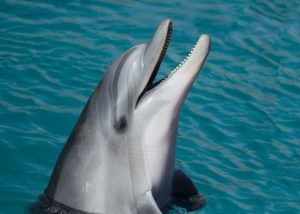Book Review: Voices in the Ocean
Review of Voices in the Ocean by Susan Casey
Reviewed by Joan Hoffman
A steady stream of surprises flows from the absorbing and moving book on dolphins (and Beluga whales), Voices in the Ocean (2015) by Susan Casey. My ignorance was greater than expected and much of what I had thought was wrong. In part this is because Casey presents the results of recent research. It is also because she journeys around the world to acquire and share first hand experiences of the far flung places and varied fascinating people engaged in dolphin interactions: communities, scholars, business people and activists alike. The learning provided by this much needed book brought both delight and dismay. Sometimes I was just stunned.
To begin with dolphins and whales are part of the same toothed whale species, and dolphins are a different species than porpoises (All are a subgroups of cetaceans.). I confess to have been flabbergasted to learn that these amazing creatures of the sea had originated as land animals with hooves. Perhaps the watery world gradually inundated their original environment, but in any case over the 38 million years they evolved the ability to traverse the seas. Additionally, they developed a huge brain that has capacities well beyond ours and that apparently works faster also. Their adaptation to ocean life has led to very strong collaboration, and they appear to be able to communicate with one another instantly. Different groups within the oceans have distinct cultures, languages and skills which are taught over years of learning. Their bodies have highly evolved intricate means of communicating and receiving information. Females live beyond menopause and grandmothers play key roles these matriarchal societies. It would appear that the grandmothers are valuable repositories of information that must be handed down through the generations.
Delight in learning about the strong and warm social bonds within these groups of animals leads to dismay when Casey reveals how they are captured and isolated from their families to be placed in marine parks, often in conditions that have to be extremely boring to these highly intelligent beings, akin to the torture of solitary confinement. Around the world, cruel modes of killing and capture abound for reasons ranging from ignorance and neglect to the misinformed belief by some that dolphins rather than humans are the cause of the depletion of fish stocks in the seas. We are also poisoning their bodies with hazardous waste dumped in the oceans and damaging their remarkable and very sensitive communication system with our sonar signals. Not only are our practices inflicting pain and reducing numbers of dolphins and whales, they are also undermining the “habitat” of their culture, their slowly evolved and longstanding intergenerational arrangements for transmitting knowledge needed for survival.
Perhaps most astonishing after learning how humans have harmed them is the fact that dolphins have a long and continuous history of assisting humans. Ms. Casey describes records of strong helping relationships between dolphins and humans among the ancient Greeks and Egyptians. She tells intriguing tales of dolphins’ ongoing cooperation with people, ranging from play to rescue and work.
This book is not a tale of a dolphin fairyland. Like humans, dolphins have distinct personalities. They have moods. They differ from one another among and within groups. The various groups do not mingle with one another. If abused, dolphins can become abusive. Humans are just beginning to understand just how very abusive our systems of captivity are to dolphins. Captive dolphins have killed humans.
There is a strong moral imperative to stop this abuse. There is also much to gain. Just one example is that dolphins have much stronger self-healing powers than we have. We, however, have evolved powers that can make both dolphins and humans extinct. A recent World Wildlife Fund Study reported that, as a result of human impact, there had been a decline of 58% among invertebrates (birds, fish, mammals) between 1970 and 2012. Dolphins have survived over 38 million years. We have much to learn from them. One can start by reading this deeply researched and heartfelt book.
World Wildlife Fund Study and a report on the critiques
The Study: https://www.worldwildlife.org/pages/living-planet-report
The critiques
